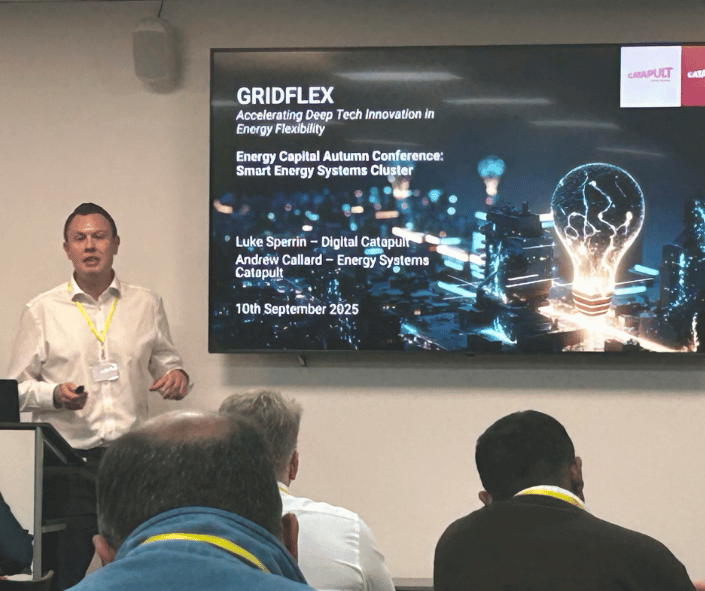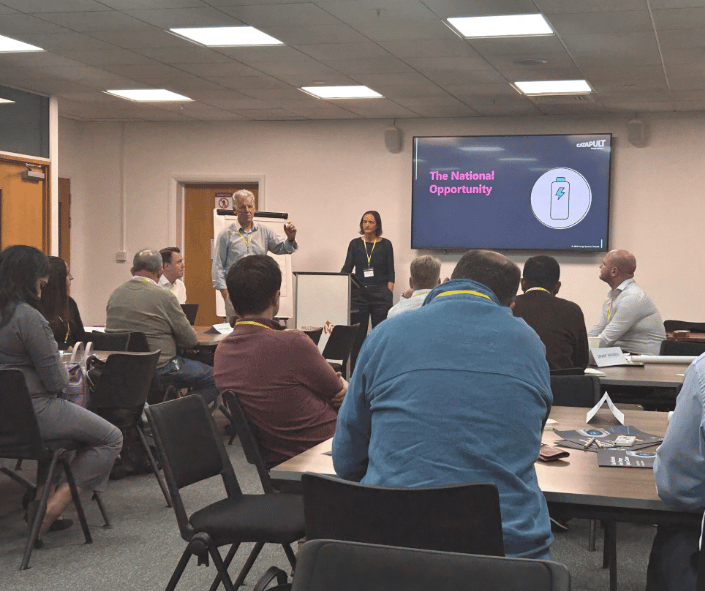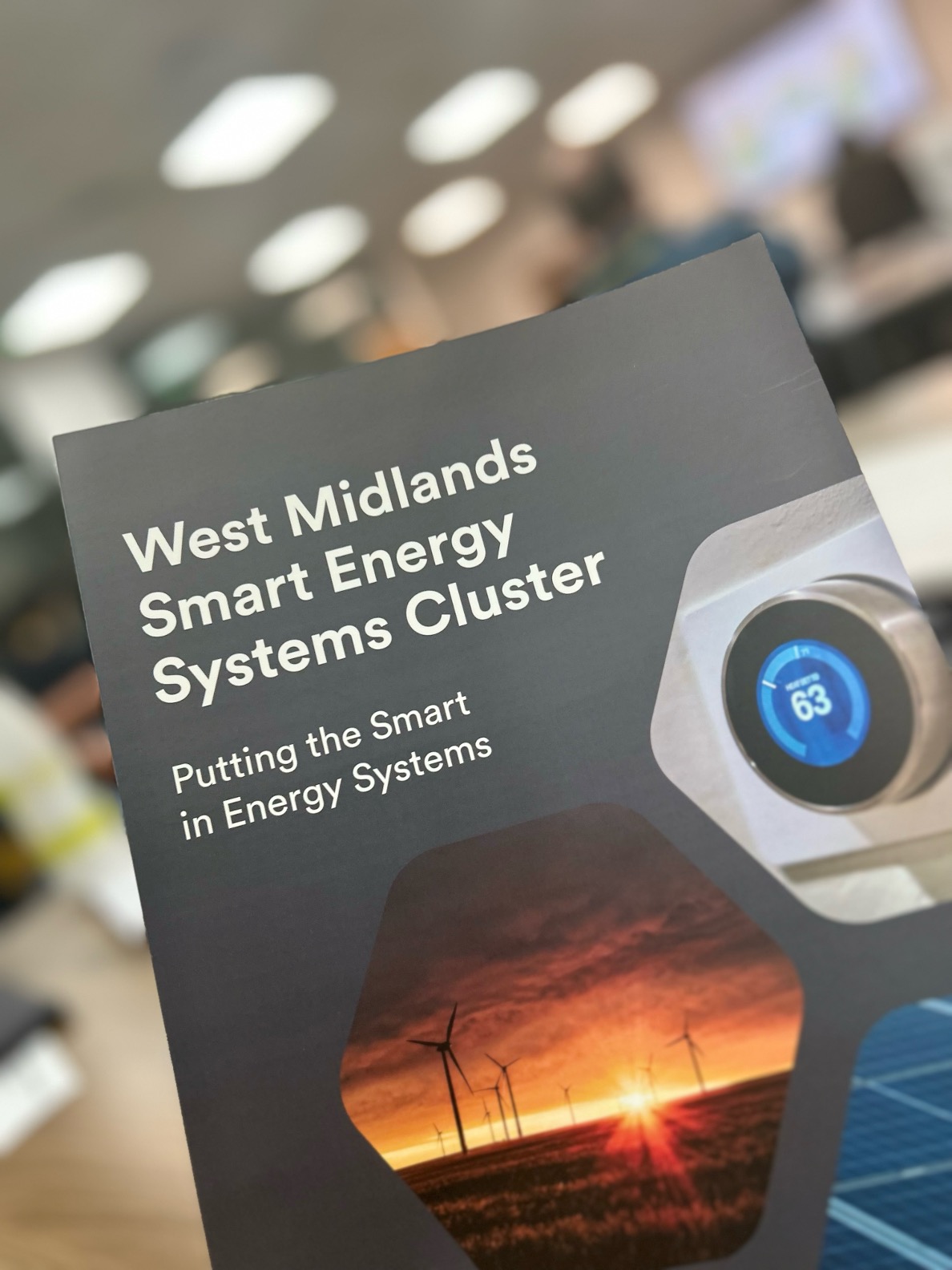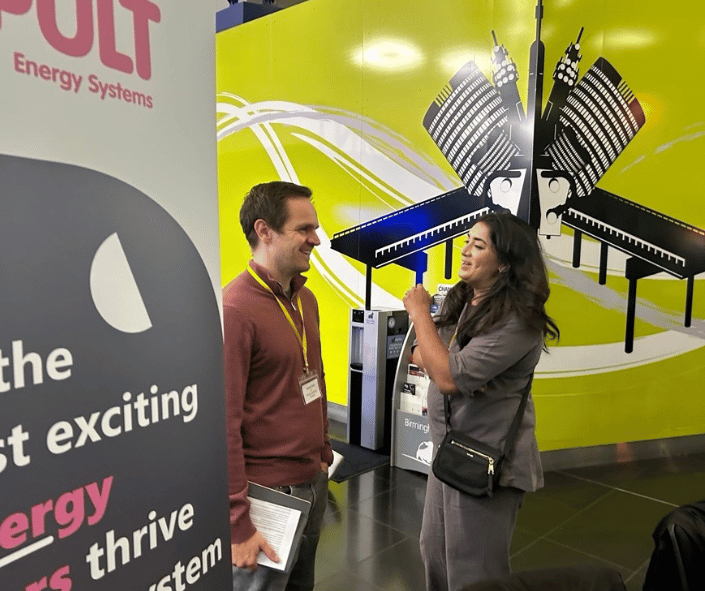By Andrew Callard, Incubation Manager, and Summayyah Hussain, SME Engagement Manager
Clusters have become something of a buzzword in UK policy circles. But when they actively bring together research excellence, industry players, innovators and investors to help spark economic growth through the supply chain – they can transform regions. In the West Midlands, we stand at the cusp of this very opportunity as we begin building a smart energy systems cluster.
Why the West Midlands and what’s the vision?
The West Midlands Growth Plan identifies smart energy systems as an area of strategic importance. This isn’t surprising. The region is home to leading research institutions including the University of Birmingham, Aston University, Birmingham City University and the Energy Systems Catapult, along with industry giants like Hitachi, Siemens and NEC. It’s also home to the National Centre for the Decarbonisation of Heat at Tyseley Energy Park.
Together, these provide fertile ground for innovation in smart energy systems, where energy flexibility and demand management solutions will be critical for the UK to achieve its economic ambitions. This is reflected in the regional energy strategy that the West Midlands Combined Authority recently refreshed.
The vision for the cluster is to:
- establish the West Midlands as the business-led centre of excellence for the design and application of smart and flexible energy systems in the UK by 2030;
- build on existing regional expertise to support and enable the sustainable growth of the supply chain;
- work to reduce barriers and exploit opportunities to drive business growth and economic prosperity;
- Support the region’s transition to Net Zero.
The region has a long history of manufacturing and engineering. As the economy transitions away from traditional industries, there is an opportunity to redeploy highly skilled staff into the fast-growing energy sector. That is how the West Midlands can retain its industrial heritage while positioning itself at the centre of a clean energy future.
And there’s more! Because its energy system is constrained and requires flexible solutions to prosper, the West Midlands is perfectly placed to become the model for transformation – one that can then be “exported” across the rest of the UK.
Turning research into action
One of the trickiest paths to navigate is the journey to commercialising energy innovation. Too often, we develop promising solutions but remain stuck at the theoretical stage. Our ambition for the cluster is to drive spinouts, to support SMEs, scale-ups and early-stage innovators, and build a bridge that carries innovation from research to real-world deployment. By forging connections across the region, its assets can exceed the sum of their parts and accelerate growth in the region.
But the vision is more complex – and ambitious – than that. Smart energy systems also underpin the transition from a one-directional energy model, where power flows from large generators to consumers, to a multi-directional model where households, businesses and communities both use and generate energy. That requires flexibility, new business model, and smarter systems at every level.
Reaching out and building awareness
Our roles within the cluster are distinct but complementary. As the secretariat, we’ve been reaching out to organisations across the region, mapping stakeholders and creating opportunities for engagement. What’s become clear is that many businesses are unaware of the support available to them, and how they can get closer to other stakeholders in the region to foster mutual opportunity. Initially, this is about awareness.
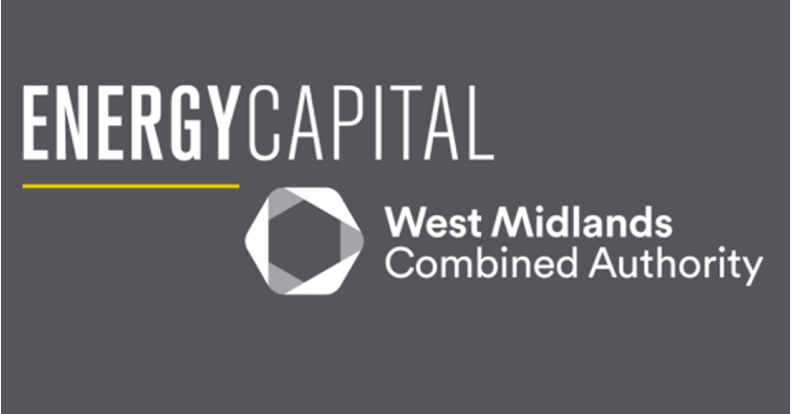
Energy Capital is the regional energy partnership for the West Midlands
Events have been a vital part of this effort. At the recent Energy Capital Partnership autumn conference, we hosted both a stand and a breakout session. Having a physical presence mattered. Businesses who had only spoken to us online appreciated being able to put a face to the name. The lesson here? Relationships are at the core of any effective cluster. Building them takes multiple touchpoints – calls, emails, events, and workshops.
Governance and next steps
The cluster is still young, but it is growing quickly. We are in the process of establishing an advisory board, ensuring decisions are made collectively by representatives from across academia, business and the public sector. At the same time, we are setting up three vertical market groups covering:
- Smart Homes: to optimise household power and costs;
- Smart Heat: for district heating systems;
- Smart Business: including commercial transport.
We will start by identifying the barriers and challenges in each of these markets. Too often, conversations jump straight to solutions, usually favouring one company’s technology or problem. By first focusing on shared problems, we can co-develop projects that are genuinely collaborative and more likely to succeed. Some of these projects will fail – that is the nature of innovation. But failure at a controlled scale is far better than national-scale mistakes. And when we show that something works in the West Midlands, we can repeat it across the UK.
Get involved
If you’re a business, researcher, or organisation interested in joining the West Midlands Smart Energy Systems Cluster, we’d love to hear from you.
As Andrew Clark, Project Director for the Cluster’s work at the Catapult, puts it: “As an organisation with a strong base in the West Midlands, we’re excited by the opportunities this project provides. It’s about showcasing the region’s strengths, unlocking investment and demonstrating how local collaboration can lead to solutions with national, and even international, impact.”
If you are interesting in joining the cluster, please contact Summayyah Hussain
